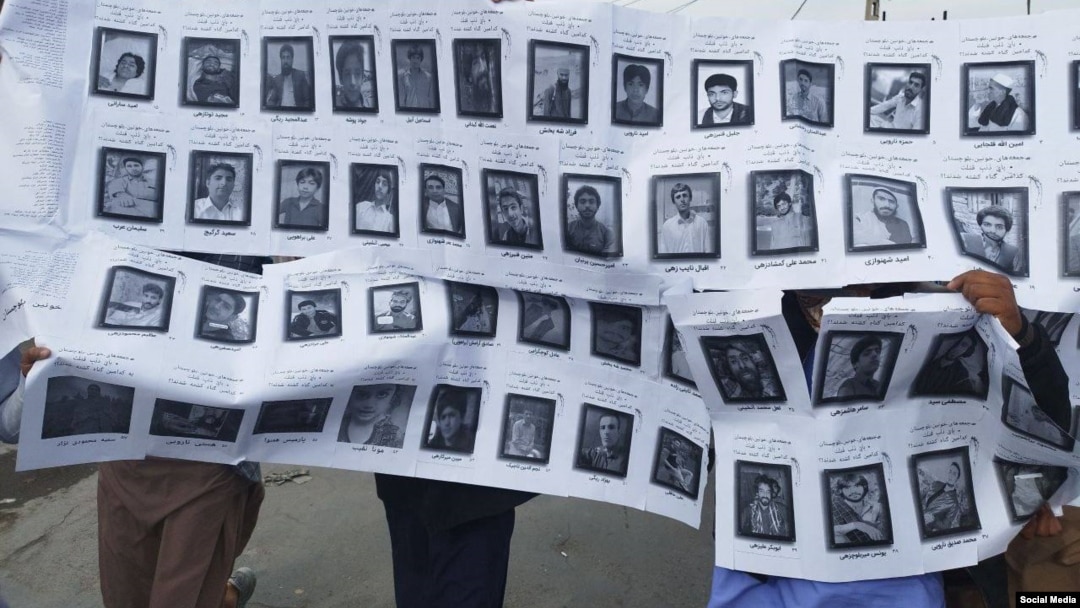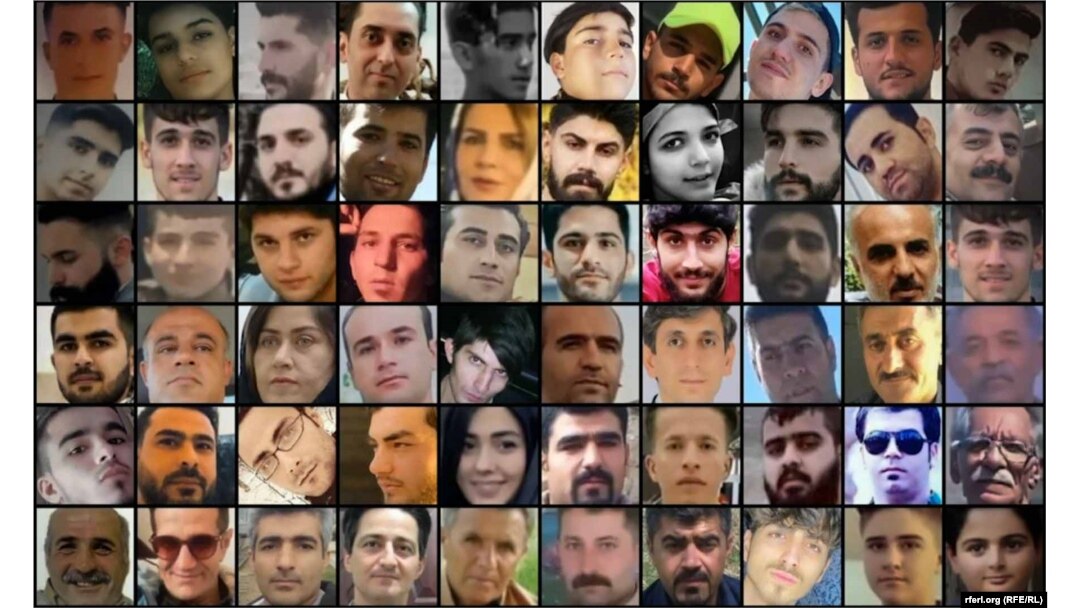Thousands of people pour into the streets and stage anti-regime rallies in Iran’s southeastern city of Zahedan after Friday Prayers every week.
The weekly demonstrations have occurred since September 30, when government forces gunned down scores of people following antiestablishment protests in the provincial capital of Sistan-Baluchistan Province, which is home to Iran’s Baluch ethnic minority.
Among those participating in the weekly rallies in Zahedan is Ahmad, who was among the more than 300 people wounded in the deadly crackdown, referred to as “Bloody Friday.”
SPECIAL REPORT: The Protests That Shook Iran's Clerical System
At least 94 people were killed that day, according to the U.S.-based Iran Human Rights Documentation Center. Several members of the security forces also reportedly died.
“I still can’t move my arm properly,” said Ahmad, who did not reveal his full name for fear of retribution. “But I protest every Friday because our rights have been violated for the past 44 years,” he added, referring to the Islamic Revolution in 1979 that brought the current clerical regime to power.
The crackdown on September 30 was the single deadliest day of the nationwide anti-regime protests that erupted after Mahsa Amini, an Iranian-Kurdish woman, died on September 16 following her arrest by Iran’s morality police for allegedly violating the country’s hijab law.
While the protests have largely subsided across most of Iran, the demonstrations have continued in Sistan-Baluchistan, fueled by anger over the deadly state crackdown and historical grievances.
Sistan-Baluchistan is one of Iran’s poorest provinces. Members of the Baluch minority, many of whom are Sunni Muslims in Shi’a-majority Iran, have long faced disproportionate discrimination and violence at the hands of the authorities.
The authorities have yet to take action against Molavi Abdolhamid, whose popularity has soared.
The sermons of Molavi Abdolhamid, the outspoken Friday Prayer’s leader in Zahedan, have also helped motivate protesters. In a rare show of dissent, Abdolhamid has publicly criticized the authorities for alleged human rights abuses and repression of Iran's ethnic and religious minorities.
The authorities blamed Jaish al-Adl, a Sunni militant group, for the September 30 killings, a claim rejected by local and independent sources.
But Abdolhamid said senior officials, including Supreme Leader Ayatollah Ali Khamenei, were responsible, saying security forces shot “indiscriminately” at people after raiding the central mosque in Zahedan and the nearby Great Mosalla, a religious site.
The cleric has called on the authorities to bring those responsible for the deaths to justice. The failure to conduct a transparent investigation has added to public anger in Sistan-Baluchistan.
The authorities have yet to take action against Abdolhamid, whose popularity has soared. A document from the hard-line Fars news agency that was leaked in November suggested Khamenei had told security and military officials to try and discredit Abdolhamid instead of arresting him.
A protester in Zahedan holds a placard that reads: "Political prisoners must be released."
One of his aides, Molavi Abdolmajid Moradzehi, was arrested in January and charged with “disturbing public opinion and numerous communications with foreign individuals and media outlets.”
Days before his arrest, Moradzehi told RFE/RL’s Radio Farda that protests would continue in Zahedan "until the issue of Bloody Friday and the people of Zahedan who were killed and injured is resolved.”
Shirahmad Shirani of Haalvsh, a Baluch rights group, told RFE/RL that Abolhamid has become a trusted and widely respected figure.
“Abdolhamid is based inside the country and people trust him. It’s not just because of the past six months, but due to his actions in recent years. People know him and they see him as someone they can rely on,” said Shirani.
“[The protesters] are demanding the rights of the Baluchis and the Sunnis that have been systematically violated during the past 40 years,” he added. “In the province, where 90 percent are Baluch, we don’t have any Baluch in senior positions, in the security bodies, or even in the education system.”
Iranian security forces seen in Zahedan earlier this month.
Shirani, a rights activist who was jailed in Iran after being convicted of acting against national security, said the protests in Zahedan have become “more organized” in recent weeks.
“If, during the first days of the protests, people were driven by anger and outrage, today it’s a mix of anger and ideals. They’re protesting knowing that they can get arrested or killed, yet they still come into the streets,” he said.
Human Rights Watch reported in December that since the Bloody Friday crackdown, security forces have killed at least eight people in Sistan-Baluchistan. Haalvsh has identified 121 people it said were killed between September 30 and March 20 in Zahedan and the nearby city of Khash.
Haalvsh has reported increased security measures in Zahedan as well as the arbitrary arrests of protesters in the city. Authorities have also routinely disrupted the Internet in Zahedan to prevent the weekly protests.
Videos posted online appeared to show protesters chanting “Death to Khamenei” and “Mullahs get lost” in Zahedan on March 24.
Despite the risks, Ahmad said he remains determined to continue making his voice heard.
“I will keep protesting, even though when I leave home I don’t know if I’ll return,” he said, adding that Sistan-Baluchistan has now become “the voice of all Iranian people."



